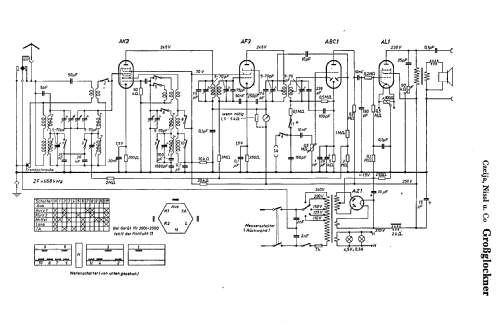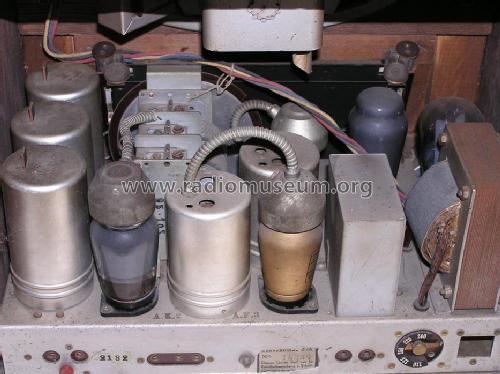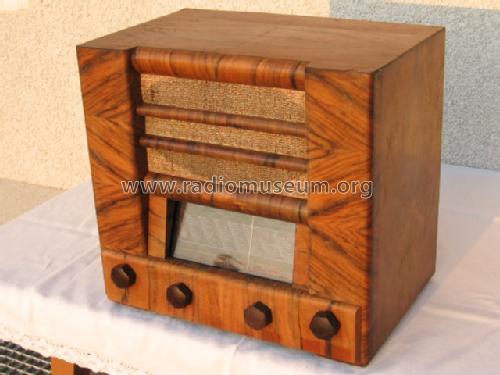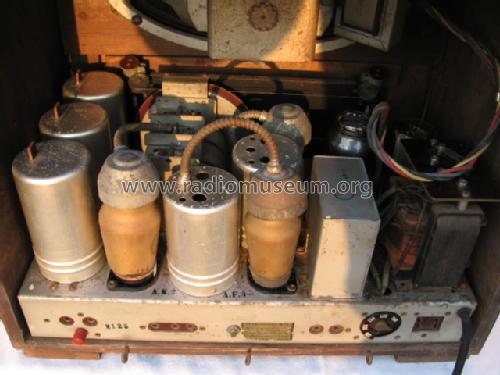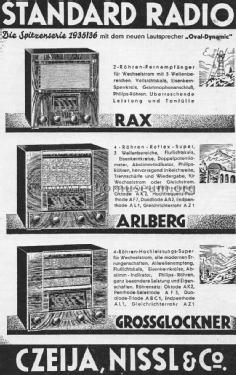Grossglockner V-40683
Czeija, Nissl & Co., Standard, ITT, Alcatel; Wien
- Country
- Austria
- Manufacturer / Brand
- Czeija, Nissl & Co., Standard, ITT, Alcatel; Wien
- Year
- 1935
- Category
- Broadcast Receiver - or past WW2 Tuner
- Radiomuseum.org ID
- 8260
-
- alternative name: Hekaphon
Click on the schematic thumbnail to request the schematic as a free document.
- Number of Tubes
- 5
- Main principle
- Superheterodyne (common); ZF/IF 468 kHz
- Tuned circuits
- 7 AM circuit(s)
- Wave bands
- Broadcast, Long Wave and 2 x Short Wave.
- Power type and voltage
- Alternating Current supply (AC) / 110; 125; 150; 220; 240 Volt
- Loudspeaker
- Permanent Magnet Dynamic (PDyn) Loudspeaker (moving coil)
- Material
- Wooden case
- from Radiomuseum.org
- Model: Grossglockner V-40683 - Czeija, Nissl & Co., Standard,
- Shape
- Tablemodel, high profile (upright - NOT Cathedral nor decorative).
- Notes
- Abst.Anz.=Ma-Meter Bandfiltereingang, 3-Fach Drehkondensator
- Price in first year of sale
- 450.00 öS
- External source of data
- E. Erb 3-907007-36-0
- Source of data
- Radiokatalog Band 2, Ernst Erb
- Circuit diagram reference
- Lange-Nowisch
- Other Models
-
Here you find 123 models, 70 with images and 35 with schematics for wireless sets etc. In French: TSF for Télégraphie sans fil.
All listed radios etc. from Czeija, Nissl & Co., Standard, ITT, Alcatel; Wien
Collections
The model Grossglockner is part of the collections of the following members.
Forum contributions about this model: Czeija, Nissl & Co.,: Grossglockner V-40683
Threads: 1 | Posts: 1
Das Gerät gab nur leisen Netzbrumm von sich, das typische Rauschen fehlte:
Der Oszillator war ausgefallen, weil der Vorwiderstand des Schirmgitter-Spannungsteilers unterbrochen war. Der zugehörige Siebkondensator war offensichtlich schon einmal ausgewechselt worden (und in Ordnung), offenbar hat man damals den Widerstand nicht überprüft.
Die offensichtliche Beschädigung war erst nach Ausbau des Widerstands sichtbar.
Ich empfehle, beim Auswechseln verdächtiger Siebkondensatoren auch die zugehörigen Vorwiderstände zu überprüfen, besonders solche, die schon im Normalbetrieb heiß werden.

Mit freundlichen Grüßen,
Johannes Bernhauser
Johannes Bernhauser, 29.Jul.11
